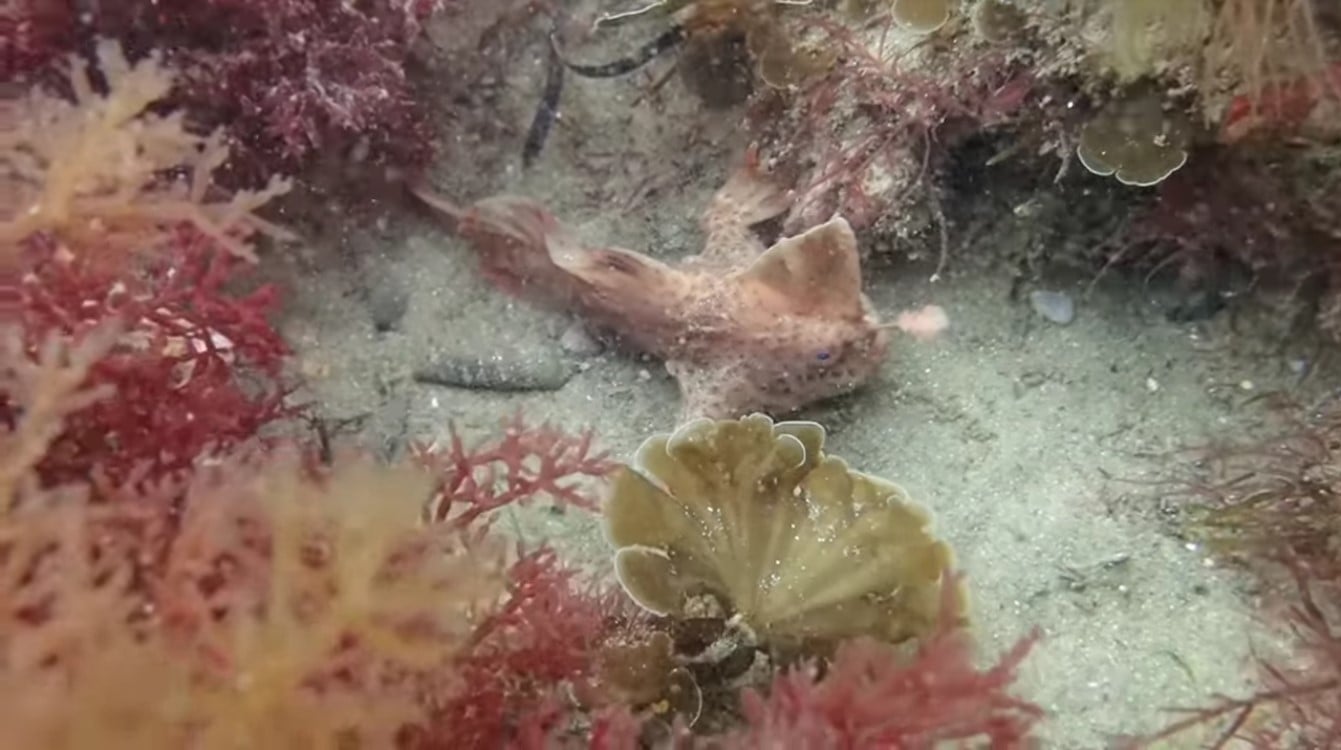Scientists originally thought that only 20 to 40 red handfish existed, which, of course, makes them critically endangered. However, divers found a new population of the crawling rare fish accidentally when diving off the coast of Tasmania, Australia.
The small red handfish is interesting because it appears to wriggle or walk instead of swim. It is located in the seabed off the coast of Tasmania and has red fins that rather look like hands than fins, which is why it is dubbed the handfish. This discovery encourages scientists to search for other species that could be swimming somewhere.
“It’s got to be close to the rarest fish in the world,” scientist Rick Stuart-Smith said in a video which was published by the Institute for Marine and Antarctic Studies (IMAS). “Finding this second population is a huge relief as it effectively doubles how many we think are left on the planet.”
The presence of the red handfish was originally reported by a member of the public. After that, divers from IMAS and the citizen science Reef Life Survey went diving off the coast of southeast Tasmania in order to search the area. They searched an area located a few miles away from another known handfish population in Frederick Henry Bay.
After hours of searching, IMAS technical officer Antonia Cooper and a team of seven divers wanted to give up.
“We were all looking at each other going, well this is not looking promising,” Cooper said.
The team hadn’t seen any sign of the crawling rare fish. She was about to give up and was quite frustrated. She gave a signal to her diving partner to end the search. She waited for her team of divers to head in when she discovered one of the crawling rare fish.
The divers then continued searching. They managed to identify eight creatures, estimating that there are 20 to 40 handfish which live on this site.
Thanks to the discovery of the crawling rare fish, scientists learned that these creatures are better at adapting than previously thought.
Stuart-Smith explained in a video: “We’ve already learned a lot from finding this second population because their habitat isn’t identical to that of the first population, so we can take some heart from knowing red handfish are not as critically dependent on that particular habitat.”
“Because each population is so small, it’s an indication that they are very sociable animals.”
The discovery of the red handfish population brings optimism to the scientists that they might be able to find some species that were previously thought to be extinct, but have actually just been swimming beneath the radar. Ziebell’s handfish, for example, hasn’t been seen for over a decade, and is believed to be extinct.
Stuart-Smith added: “The only thing that would have been more exciting last week would have been finding the Ziebell’s and finding out that they’re not extinct.”





